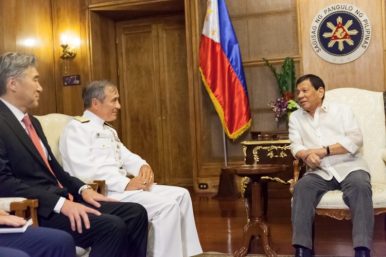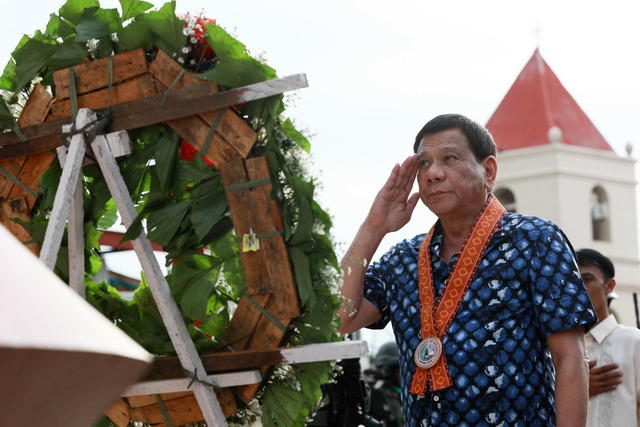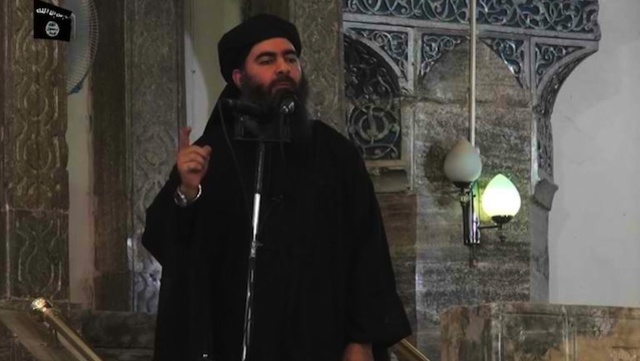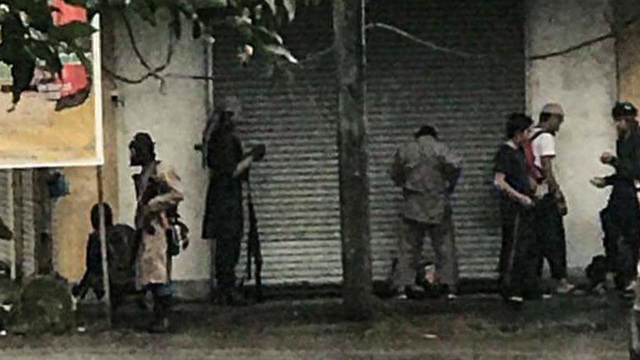Philippine troops guard a lakeshore village near the southern town of Bacolod Kalawi near Marawi after several gunmen aboard a boat were spotted near the area, Sept. 28, 2017.
Heavy fighting broke out Thursday between government forces and gunmen sent to reinforce militants linked to the Islamic State (IS) who are cornered in the southern Philippine city of Marawi after four months of clashes, military officials said.
BenarNews journalists saw black smoke billowing from Balut, a sparsely inhabited island about three km (1.8 miles) from downtown Marawi, after air force planes dropped bombs and fired rockets at enemy positions.
The island lies in Lake Lanao, a 340 square-km (130 square-mile) body of water that militants have used to travel into and out of the devastated city.
About 70 militants, remained but some were trying to escape on the lake as they ran out of food, water and ammunition, said Col. Romeo Brawner, the deputy commander of the local military task force.
However, Brawner said he was certain the militants in Balut were part of the militants’ reinforcements, and not from the battlefront in the city.
How they landed on the island was not clear, but officials indicated that troops had not sealed off entry and exit points in and out of Marawi, a predominantly Muslim city that has been reduced to rubble since the fighting started on May 23.
Some civilians reported seeing gunmen traveling on boats, Marawi Mayor Abdul Mohaiman Dipatuan told BenarNews.
“There were no residents in that island, so probably they are terrorists” out to support Abu Sayyaf and Maute fighters, Dipatuan said.
Jun Sangcopan, a resident of Bacolod Kalawi, a town near Lake Lanao, said he saw four boats loaded with armed men heading into Balut and the nearby lakeside towns of Tugaya and Ganasi.
Brawner said a military contingent was deployed quickly to check on Balut island, but encountered heavy resistance.
“There’s an ongoing operation right now. The report said at least seven armed men were seen but we believe several more were there,” he told BenarNews.
“They were reinforcements. We are certain nobody was able to get out from the main battle zone in Marawi,” Brawner added.
He said there are strong indications Abu Sayyaf commander Isnilon Hapilon, the IS leader in the Philippines, was still inside the main battle area with Omar Maute, a local militant leader.
At least 711 militants, 172 military and police officers and 47 civilians have been killed since hundreds of extremists, backed by foreign fighters, seized Marawi, the biggest security challenge to President Rodrigo Duterte’s government.
Balut Island [Richel V. Umel/BenarNews]
http://www.benarnews.org/english/news/philippine/lake-battle-09282017121358.html











